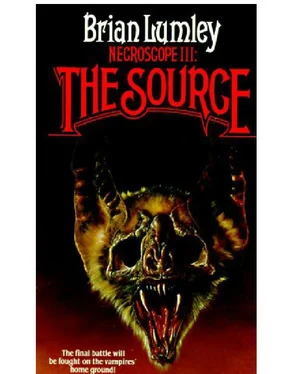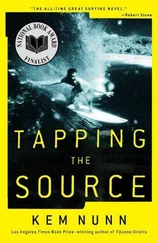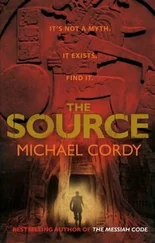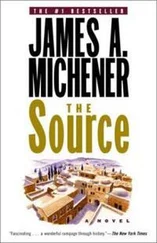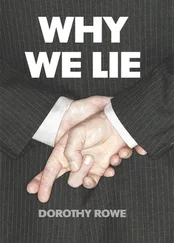Brian Lumley
The Source
Necroscope — 3
The agent lay on a patch of snow in a jumble of white boulders on the eastern crest of what had once been the Perchorsk Pass in the mid-Ural'skiy Khrebet. He gazed down through nite-lite binoculars on almost two acres of curved, silvery-grey surface covering the floor of the ravine. By the light of the moon that surface might easily be mistaken for ice, but Mikhail Simonov knew that it was no glacier or frozen river; it was a mass of metal some four hundred feet long by something less than two hundred wide. Along the irregular edges of its length, where its gently curving dome met the rocky walls of the gorge, and at both ends, where the arcing metal came up flush against massive concrete barriers or dams, the stuff was 'only' six inches thick, but at its centre the moulded mass was all of twenty-four inches through. That was what had registered on the instruments of the American spy-satellites, anyway, and also the fact that this was the biggest man-made accumulation of lead anywhere in the world.
It was like looking down on the three-quarters-buried, lead-wrapped neck of some giant bottle, thought Mikhail Simonov. A magic bottle — except that in this case the cork had already been pulled and the genie flown, and Simonov was here to discover the nature of that very dubious fugitive. He gave a quiet snort, pushed his flight of fancy to the back of his mind, focused his eyes and concentrated his attention on the scene below.
The bottom of the ravine had been a watercourse subject to severe seasonal flooding. Up-river, above the 'wet' dam wall, an artificial lake was now full, its surface flat and likewise leaden — but only its surface. Channelled under the great roof of lead through unseen sluices, the water reappeared in four great shining spouts issuing from conduits in the lower wall. Spray rose up from that deluge, froze, fell or drifted back to coat the lower ravine in snow and ice, where for all the apparent volume of water only a stream now followed the ancient course. Under the shield of lead, four great turbines lay idle, bypassed by the hurtling waters bled off from the lake. They'd been at rest like that for two years now, since the day the Russians had tested their weapon for the first — and the last — time.
Despite all the USSR's technological camouflaging countermeasures, that test, too, had been 'seen' by the American spy-satellites. What exactly they saw had never been made public or even hinted at outside of higher-echelon and correspondingly low-profile government departments, but it had been sufficient to jolt America's SDI or 'Star Wars' concept into real being. In very small, very powerful and highly secretive defence circles throughout the Western World there had been worried discussions about APB (Accelerated Particle Beam) 'shields', about nuclear-or plasma-powered lasers, even about something called a 'Magma Motor' which might theoretically tap the energy of the small black hole believed by some scientists to lie at Earth's core, simultaneously feeding upon and fuelling the planet; but all such discussions had been purely conjectural. Certainly nothing substantial — other than the evidence provided by the satellites — had leaked out of Russia herself; nothing, that is, in the way of normal intelligence reporting. No, for the Ural Mountains in the region of Perchorsk had been for some time far more security-sensitive than even the Baikonur Space Centre in the days of the Sputniks.
And it was a sensitivity which, in the aftermath of that single, frightful test, had suddenly increased fourfold.
Simonov shivered in his white, fur-lined anorak, carefully demisted his binoculars, flattened himself more rigidly to the frozen ground between the boulders as scudding clouds parted and a nearly full moon blazed treacherously down on him. It was cold in the so-called 'summer' up here, but in the late autumn it was a kind of frozen hell. It was autumn now; with a bit of luck Simonov would escape suffering through another winter. No, he mentally corrected himself, that would take a lot of luck. A hell of a lot!
The scene below turned silver in the flooding moonlight, but the special lenses of Simonov's binoculars made automatic adjustment. Now he turned those lenses on the pass proper, or what had been the pass until the Perchorsk Projekt had got underway some five years ago.
Here on the eastern side of the ravine, the pass had been eroded through the mountain's flank by one of the sources of the Sosva River on its way down to Berezov; on the western side, it had been dynamited through a deep saddle. Falling steeply from the mountains, its road roughly paralleled the course of the Kama River for two hundred and fifty miles to Berezniki and Perm on the Kirov-Sverdlovsk rail link.
In the forty years prior to the Projekt, the pass had been used chiefly by loggers, trappers and prospectors, and for the transportation of agricultural implements and produce both ways across the range. In those days its narrow road had been literally carved and blasted from the solid rock, and so it had remained until recently: a rough and ready route through the mountains. But the Perchorsk Projekt had brought about drastic changes.
With the construction of the Zapadno rail link to Serinskaja in the east, and the extension of the railway from Ukhta to Vorkuta in the north, the high pass had long since fallen out of favour as a route through the mountains; it had only remained important to a handful of local farmers and the like, whose livelihoods hardly mattered in the greater scheme of things. They had simply been 'relocated'. That had taken place four and a half years ago; then, with all the speed, ingenuity and muscle that a superpower can muster the pass had been reopened, widened, improved and given a two-lane system of good metalled roads. But not as a public highway, and certainly not for the use of the far-scattered 'local' communities. Indeed, their use of the pass had been strictly forbidden.
In all the project had taken almost three years to complete, during which time the Soviet intelligence services had leaked innocuous details of 'a pass in the Urals which is undergoing repair and improvement'. That had been the official line, to forestall or confuse the piecing together of the true picture as seen by the USA from space. And if additional proofs of the innocence of the Perchorsk Projekt were required, it could also be seen that gas and oil pipelines had been laid in the pass between Ukhta and the Ob gasfields. What the Russians couldn't conceal or misrepresent was the construction of dams and the movement of heavy machinery, the incredibly massive lead shield built up in layers over the erstwhile bed of a powerful ravine torrent, and perhaps most important, the gradual build-up of troop movement into the area to a permanent military presence. There had been a deal of blasting, excavation and tunnelling, too, with many thousands of tons of rock moved out by truck or simply dumped into local ravines, plus the installation of large quantities of sophisticated electrical equipment and other apparatus. Most of which had been seen from space, and all of which had intrigued and irritated the West's intelligence and security services almost unendurably. As usual, the Soviets were making life very difficult. Whatever they were up to, they were doing it in an almost inaccessible, steep-sided ravine nine hundred feet deep, which meant that a satellite had to be almost directly overhead to get anything at all.
Conjecture in the West had gone on unabated. The alternatives were many. Perhaps the Russians were attempting to carry out a covert mining operation? It could be that they'd discovered large deposits of high-grade uranium ore in the Urals. On the other hand, maybe they were concerned with the construction of experimental nuclear installations under the very mountains themselves. Or could it be that they were building and making ready to test something quite new and radically different? As it happened — when it happened, at that time just two years ago — advocates of the third alternative were seen to have guessed correctly.
Читать дальше
